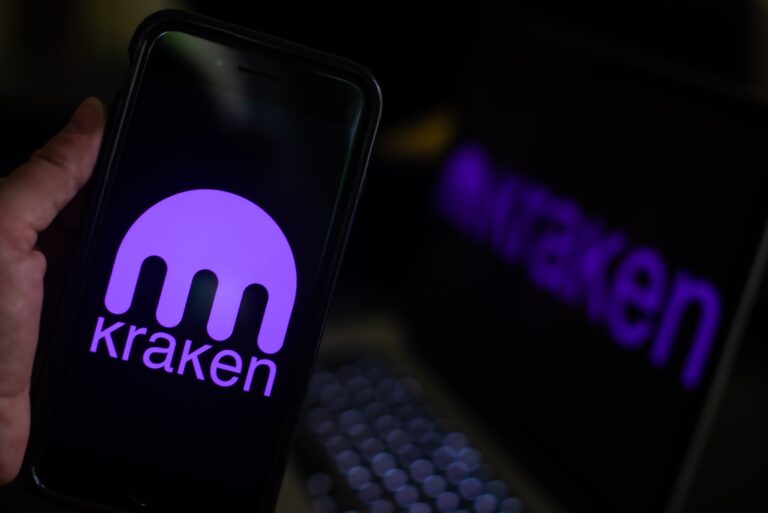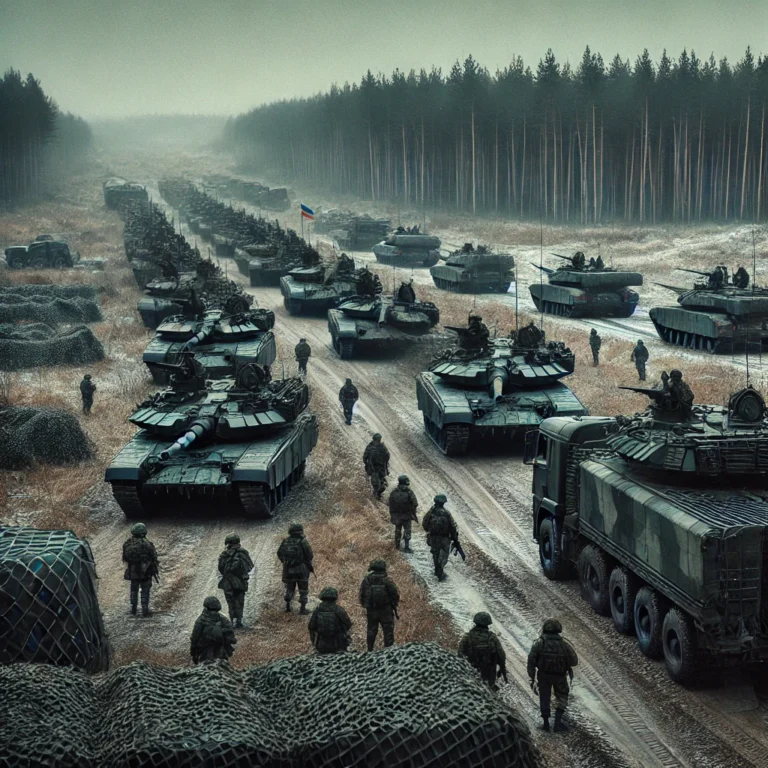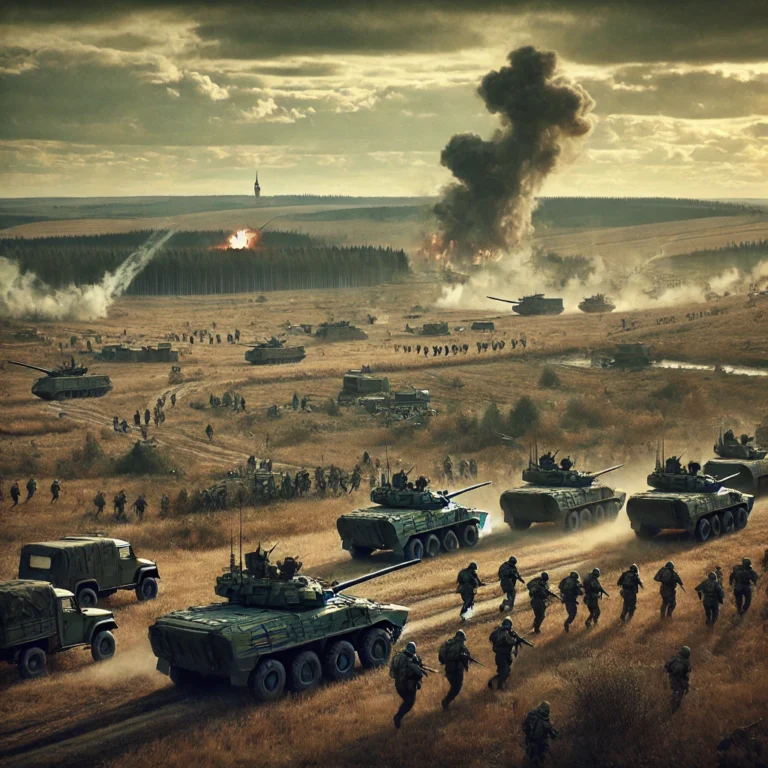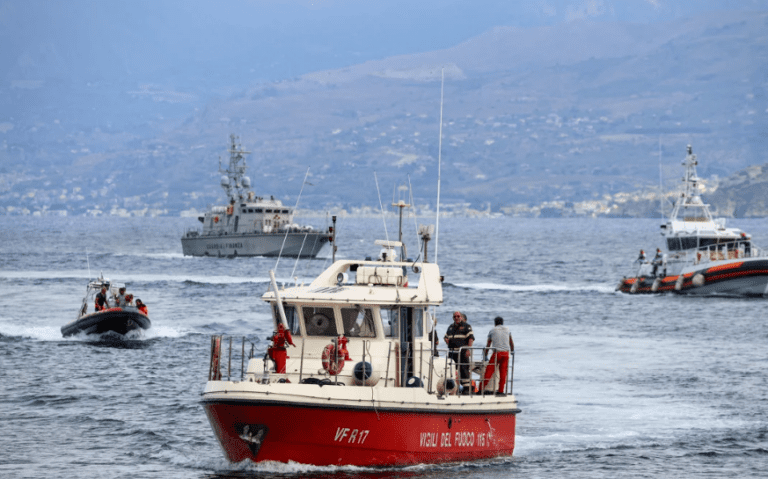A U.S. District Court has denied Kraken’s motion to dismiss a lawsuit filed by the Securities and Exchange Commission (SEC). The SEC alleges that Kraken’s staking-as-a-service program constitutes an unregistered securities offering, violating U.S. securities laws. Kraken argued that the SEC’s claims were unfounded, but the court ruled that the case should proceed, emphasizing the need for a trial to determine whether Kraken’s activities indeed violated the law. This decision represents a significant moment in the ongoing legal battles between cryptocurrency platforms and regulatory bodies.
Telegram CEO Pavel Durov Arrested in France Amid Crackdown on Encrypted Messaging Services
On August 25, 2023, Pavel Durov, the founder and CEO of Telegram, was reportedly arrested in France. The arrest is part of a broader crackdown by French authorities on online platforms suspected of facilitating illegal activities, including the spread of criminal content. Telegram, known for its strong encryption and commitment to user privacy, has been criticized for allegedly allowing harmful content to proliferate without adequate oversight. This arrest highlights the ongoing tensions between digital privacy advocates and governments seeking to regulate online platforms more strictly.
The arrest of Durov could have significant implications for Telegram and other tech companies, as it underscores the increasing legal pressures they face in Europe. French authorities have been particularly aggressive in enforcing regulations designed to curb the spread of illegal content, with a focus on holding platform executives accountable.
Telegram has long been a target of scrutiny due to its encryption features, which make it a popular choice for users who prioritize privacy. However, these same features have also made it a preferred platform for those seeking to evade law enforcement. The arrest of Durov could signal a shift in how governments approach the regulation of encrypted messaging services, with potential repercussions for the entire tech industry.
This situation also raises broader questions about the balance between privacy and security in the digital age. While many users rely on platforms like Telegram to protect their communications from prying eyes, governments argue that stronger oversight is needed to prevent criminal misuse. The outcome of this case could set a precedent for how such issues are handled in the future.
As the story continues to develop, it will be important to watch how both Telegram and other similar platforms respond to the increasing pressure from governments worldwide.
René Benko’s Fall: The Auction of His Luxuries
Once heralded as a real estate prodigy, Signa Group founder René Benko now faces the harsh reality of his empire’s downfall. In March 2024, following the financial collapse of his company, Benko filed for bankruptcy. To alleviate his mounting debts, his personal luxury items are now being auctioned, including a Patek Philippe Nautilus 5980 chronograph, various high-end watches, and a sport boat, among other valuables. The total estimated value of these items is €331,430, yet the symbolic weight they carry is far greater.
The Patek Philippe Nautilus 5980: A Symbol of Decline
Among the prized possessions being sold is Benko’s Patek Philippe Nautilus 5980, once a highlight of his extensive watch collection. This luxury chronograph, valued at approximately €65,000 in June, now tells a different story. The watch, which has seen frequent use, shows deep scratches and signs of wear, a testament to its history. It has become more than just a timepiece; it symbolizes the end of an era for Benko, whose once-glorious career is now in disarray.
The Auction of Benko’s Luxuries
The liquidation of Benko’s assets includes an array of luxury items meticulously cataloged by court-appointed appraiser Nikolaus Karner. These items were found across Benko’s residences in his villa near Innsbruck and at Lake Garda. The collection features eight luxury watches, including brands like Hublot and Rolex, with a combined market value of €142,550. Additionally, there are four gold and diamond-studded bracelets, 15 pairs of monogrammed cufflinks with a total value of €29,680, and a range of designer furniture and sporting equipment.
From Lavish Lifestyle to Liquidation
The assortment of Benko’s possessions also includes more unusual items like a design pergola valued at €40,000, a sport boat worth €95,000, and a €14,500 Sea-Doo watercraft. The appraised total for all items stands at €331,430, but their sale is anticipated to exceed market value due to their provenance. As the Signa empire crumbles, even Benko’s once-cherished belongings are being sold off, marking a poignant end to his era of success.
A Symbolic Auction
This auction doesn’t just represent the sale of luxury goods; it is a stark illustration of Benko’s dramatic fall from grace. Once seen as a wunderkind in the real estate industry, Benko’s current predicament serves as a reminder of how quickly fortunes can change. The items, once symbols of wealth and success, now reflect the impermanence of both. Buyers may be drawn not only by the quality of the items but also by the story they tell—a story of a tycoon’s rise and fall.
Justin and Hailey Bieber Welcome Their First Child, Jack Blues
In exciting news for fans around the world, pop sensation Justin Bieber and his wife, model Hailey Bieber, have announced the birth of their first child, a baby boy named Jack Blues. The couple, who have been married since 2018, shared the joyous news with their followers, expressing their gratitude for the love and support they’ve received throughout Hailey’s pregnancy.
Jack Blues Bieber was born on [specific date if available], and both mother and baby are reported to be in excellent health. The couple chose a name that combines a traditional first name with a unique middle name, reflecting their creative personalities. The announcement was met with an outpouring of congratulations from fans and fellow celebrities alike.
Justin and Hailey have been open about their journey to parenthood, often sharing glimpses of their life together on social media. The birth of Jack Blues marks a new chapter in their relationship, as they embark on the adventure of raising a family.
As one of the most high-profile couples in the entertainment industry, the Biebers’ parenting journey is sure to capture the attention of fans and media alike. While the couple has requested privacy during this special time, they have promised to share updates and milestones with their loyal followers.
The birth of Jack Blues Bieber is a heartwarming moment that will undoubtedly be celebrated by fans across the globe, as Justin and Hailey Bieber step into their new roles as parents.
Parents Hide Children as Pokrovsk Faces Mandatory Evacuations Amid Russian Advances!
As Russian forces advance toward the strategically vital Ukrainian city of Pokrovsk, parents are reportedly hiding their children from local authorities to avoid mandatory evacuations. The communities in and around Pokrovsk, located in eastern Ukraine, are under intense pressure to flee as warnings increase about the deteriorating situation. Despite Ukraine’s own military advances into Russian territory, the threat posed by Russian forces continues to grow in the region.
Local officials have urged residents to evacuate within the next two weeks as the situation becomes increasingly dangerous. The city of Pokrovsk, once home to around 60,000 people, has seen many residents flee since the full-scale invasion began, but many remain. Daily evacuations are ongoing, with approximately 600 to 700 people leaving each day. On Thursday alone, Ukraine’s national rail network reported that 371 people were evacuated by train, requiring nine extra carriages to accommodate the surge.
Fear and Reluctance to Leave
Evheniya, a 65-year-old resident of Pokrovsk, expressed her fears but remains reluctant to leave despite the danger. “At night [I hear] blasts, and I sit up in my bed. It’s so scary when you are alone,” she told CNN. Similarly, Natalya, 69, plans to flee soon, saying her “nerves are on the edge” as the situation grows more intense.
Pokrovsk is not a large city, but it plays a critical role for the Ukrainian military due to its proximity to Kostiantynivka, another military hub. The Ukrainian military has described Pokrovsk as the “hottest” front of the war, with fighting ongoing in multiple areas. The surrounding region includes 39 villages, as well as the nearby town of Myrnohrad, which is only three miles from the front lines.
Families Hiding Children from Authorities
Despite the increasing danger, many residents are reluctant to leave, with some going so far as to hide their children from authorities to avoid forced evacuation. Yurii Tretiak, head of the military administration in Myrnohrad, warned that the situation would only worsen and urged residents to leave. “Don’t wait. It will not get better, it will only get worse,” he said. Tretiak also revealed that authorities are now conducting house visits to locate families hiding children and providing false information about their whereabouts.
One evacuee, Kateryna, shared her emotional struggle as she prepared to leave Pokrovsk with her teenage son and toddler daughter. “I have lived here for 30 years, since I was born. Can you imagine what it’s like to live here all your life and suddenly give up everything?” she said in a statement released by Ukraine’s rail operator.
Escalating Conflict in Donetsk and Beyond
While the people of Pokrovsk and its surrounding areas face continued shelling, Russian forces claim to have captured the village of Mezhove in Donetsk as part of their offensive. Ukrainian President Volodymyr Zelensky acknowledged the difficult situation, stating that Ukrainian forces are reinforcing the eastern region to fend off further advances by Russian troops.
Amid these developments, Russian authorities have also reported thwarting a Ukrainian incursion into the border region of Bryansk. The governor of Bryansk, Alexander Bogomaz, confirmed that Russian Federal Security Service (FSB) forces had stabilized the area after clashes with Ukrainian troops.
Meanwhile, Ukraine continues its bold cross-border operations into the Kursk region of Russia, where it has captured over 1,000 square kilometers of territory. Ukrainian officials have described the incursion as an effort to create a “buffer zone” to prevent further cross-border attacks by Russian forces.
As the conflict escalates on both sides of the border, the people of Pokrovsk and other affected regions face the difficult decision of whether to stay or flee, with many families caught in the crossfire.
Trump Endorsements and Campaign Spending Boost Business at Mar-a-Lago!
Late in 2023, former President Donald Trump endorsed Bernie Moreno, a car dealership owner, for Ohio’s Senate seat, elevating the businessman over more seasoned Republican candidates. Just days after receiving Trump’s endorsement, Moreno’s campaign spent around $17,000 at Trump’s Mar-a-Lago resort, followed by another $79,000 the following month, positioning him as one of the top political spenders at Trump’s Florida club. Moreno is just one example of several Republican candidates spending significant amounts at Trump-owned businesses in apparent attempts to garner favor with the former president.
According to a CNN analysis of federal campaign finance data, Republican candidates and political groups are on track to spend more at Trump’s businesses in 2024 than in any other year since 2016. Fundraisers at Mar-a-Lago, stays at Trump hotels, and flights on Trump’s private jet have all contributed to this spending surge. Trump’s campaign alone has funneled more than $28 million to his businesses since his first presidential bid in 2016, translating his political support into financial gain.
Politics and Business: A Symbiotic Relationship
Trump’s businesses have benefited immensely from his political clout, with several Republican candidates spending large sums at his properties. In return, these candidates have often secured key endorsements from Trump. Notably, many of the biggest spenders at Trump properties have been political newcomers like Bernie Moreno, former Georgia Senate candidate Herschel Walker, and Arizona Senate hopeful Kari Lake, who received early endorsements from Trump despite their lack of political experience.
In the first half of 2024 alone, campaigns and political action committees (PACs) have spent nearly $3.2 million at Trump businesses. The largest chunk—about $1.9 million—was spent by Trump’s own campaign and associated fundraising committees on air travel from TAG Air, the Trump-owned company that operates his jet. Another $1 million has been spent at Mar-a-Lago, with an additional $200,000 spent at Trump’s other hotels and resorts.
While the spending at Trump’s properties has drawn attention, some experts question whether candidates are patronizing these businesses in exchange for endorsements. Kathleen Clark, a government ethics expert, suggested that while there’s no direct evidence of a quid pro quo, the overlap between campaign spending at Trump properties and his political endorsements raises concerns.
Endorsements Pay Off
For candidates like Bernie Moreno, Trump’s endorsement has been a game-changer. Moreno, who owns car dealerships in Cleveland, ran for Senate in 2022 but dropped out after speaking with Trump. In 2023, he re-entered the race, spending tens of thousands of dollars at Mar-a-Lago for fundraisers and catering services. In December 2023, Moreno secured Trump’s endorsement, and his campaign spending at Trump properties soared. In January 2024, Moreno spent another $80,000 at Mar-a-Lago for a fundraiser that raised approximately $350,000. Thanks to Trump’s backing, Moreno won a highly competitive Republican primary.
Herschel Walker, another newcomer to politics, also benefited from early support from Trump. Walker’s campaign spent nearly $215,000 at Mar-a-Lago and other Trump properties, which helped propel him to a GOP primary win in Georgia’s Senate race. Though Walker ultimately lost the general election, his campaign manager noted that the fundraising events at Trump properties were highly successful, bringing in over a million dollars.
Arizona Senate candidate Kari Lake has also been a major spender at Mar-a-Lago, dropping more than $100,000 there so far in 2024. Like Moreno and Walker, Lake secured Trump’s endorsement, winning her Senate primary with 55% of the vote.
The Line Between Politics and Profit
While Trump’s endorsement has proven crucial for candidates like Moreno, Walker, and Lake, his businesses have also benefited from the political spending. Trump’s own campaign and associated PACs have spent over $28 million on his businesses since 2016, making him the largest political spender at his properties. While it is legal for candidates to use campaign funds at their own businesses, experts have raised concerns that donors may not realize their contributions are indirectly supporting Trump’s personal wealth.
Despite these concerns, Trump’s financial disclosure statements indicate that his businesses continue to thrive. In 2024, Trump reported earning $56.9 million from Mar-a-Lago and $4.4 million from his air travel company, TAG Air.
A Shift in the GOP’s Spending Patterns
While some Republican groups have continued to spend heavily at Trump properties, others appear to be distancing themselves. The Republican National Committee (RNC), which spent over $2 million at Trump hotels and resorts between 2016 and 2022, has significantly reduced its spending in 2024. Similarly, the Senate Leadership Fund and the National Republican Congressional Committee, which spent tens of thousands of dollars at Trump properties in past election cycles, have not reported any major spending there since 2020.
Nevertheless, for many Republican candidates, spending at Trump properties remains a strategic investment. As long as Trump’s endorsement holds weight in GOP primaries, his businesses are likely to continue benefiting from political spending. However, as the lines between politics and profit blur, the long-term impact on the Republican Party and its candidates remains to be seen.
Russia Urges Citizens and Soldiers to Limit Social Media and Dating App Use Amid Ukrainian Incursion!
As Ukrainian forces continue their advances into Russian territory, Russian authorities have issued a warning to residents in border regions and military personnel, urging them to refrain from using dating apps and limit social media activity to prevent Ukrainian intelligence from gathering sensitive information. The plea comes as Ukraine’s forces make significant progress in their surprise incursion into the Kursk region.
On Tuesday, Russia’s interior ministry issued an official statement directed at residents of the Bryansk, Kursk, and Belgorod regions, as well as military and police forces stationed in those areas, to stop using online dating services and be cautious when sharing videos or posts online. “The enemy actively uses such resources for information gathering,” the ministry warned via its Telegram channel.
As part of a broader set of security recommendations, authorities also urged people not to open hyperlinks from unknown senders and to avoid streaming videos from roads where military operations are taking place. A key concern is that Ukrainian forces have been reportedly connecting to unprotected CCTV cameras in the region, using them to monitor both private and strategically important areas like highways.
Threats Posed by Social Media and Apps
Russian troops and police were specifically advised to disable geo-tagging on their social media accounts, as Ukrainian forces are believed to be monitoring real-time data from posts to track the location of military and security personnel. The concern reflects a long-standing vulnerability where soldiers and civilians unknowingly share sensitive data through everyday mobile apps and social media platforms.
This is not a hypothetical threat. The security risks tied to social media and smartphone use in conflict zones have been well-documented. In a high-profile case last year, Russian submarine commander Stanislav Rzhitsky was shot while jogging, with reports suggesting he may have been tracked via the Strava fitness app, where he openly shared his running routes.
The situation in Kursk and other border regions, including Bryansk and Belgorod, has intensified in recent days. Ukrainian military officials claim their forces have advanced nearly 35 kilometers (22 miles) into Russian territory since the assault began, capturing 93 settlements. More than 121,000 residents of the Kursk region have already been evacuated, according to Russia’s Ministry of Emergency Situations.
Ukraine’s Cyber and Physical Advancements
Ukraine’s offensive in Russia has also targeted other strategic regions, such as Bryansk and Belgorod. The rapid incursion has raised significant concerns about how Russian troops and citizens might inadvertently compromise security through online activities.
The potential consequences of social media use by military personnel have been demonstrated before. On New Year’s Day in 2023, a Ukrainian strike in the city of Makiivka killed nearly 100 Russian soldiers. Russia’s defense ministry attributed the success of the strike to the widespread use of mobile phones by Russian troops, revealing their location to Ukrainian forces.
Recognizing these risks, the Russian government has moved to crack down on the use of smartphones by military personnel. Last month, Russian state media TASS reported that parliament proposed new legislation that would classify the use of internet-connected devices by soldiers as a “gross disciplinary offense,” punishable by imprisonment.
Global Concerns About Technology in Warfare
The issues raised by Russia’s current warnings are not limited to the conflict with Ukraine. In 2018, the U.S. Department of Defense banned the use of geolocation features for its military personnel after apps like Strava were found to inadvertently expose the locations of U.S. military bases worldwide through publicly shared fitness data.
As the situation on Russia’s western border remains volatile, authorities are taking every precaution to ensure that citizens and military personnel do not become unwitting sources of intelligence for Ukrainian forces. The call to limit online activity underscores the evolving nature of modern warfare, where digital footprints can be as dangerous as physical actions on the battlefield.
Four Officers Killed in Russian Prison Hostage Crisis, ISIS-Affiliated Inmates Neutralized!
In a deadly hostage situation at a maximum-security prison in Surovikino, Russia, four prison officers were killed by inmates who claimed to be affiliated with ISIS. The incident unfolded when the inmates seized several staff members during a disciplinary commission meeting, according to Russian state media.
Special forces from Russia’s National Guard (Rosgvardia) swiftly responded to the situation, neutralizing the four inmates with precision sniper shots and freeing the remaining hostages. In a statement on Telegram, the Rosgvardia confirmed, “Snipers from the special forces of the Russian National Guard in the Volgograd Region neutralized four prisoners who had taken employees hostage with four precise shots; the hostages were freed.”
Gruesome footage circulating on social media showed the aftermath of the attack, with three uniformed officers lying in pools of blood, one appearing to have had his throat slashed. Another officer was seen kneeling in a doorway. In another video, the inmates were seen waving ISIS flags.
While CNN has not independently verified the footage, the SITE terror monitoring group analyzed the clips, with one attacker calling the strike “revenge” for the Moscow concert hall attack in 2002, which killed over 130 people.
Details of the Hostage Situation
The Russian Federal Penitentiary Service (FSIN) confirmed that the inmates took hostages during a disciplinary commission meeting, which addresses cases of rule violations. In total, eight prison officers and four inmates were initially taken hostage.
Russian President Vladimir Putin was briefed on the situation by the head of the Federal Penitentiary Service, according to state media outlet TASS.
Previous Hostage Crisis
This incident follows a similar event in June, when six detainees, reportedly with ISIS links, took two employees of a pre-trial detention center hostage in Rostov-on-Don, southern Russia. Those detainees were killed during the rescue operation.
As Russia continues to face threats from both domestic and international terror groups, this latest incident underscores the ongoing challenges facing its security forces.
Body of British Tech Tycoon Mike Lynch’s Daughter Recovered from Wreck of Superyacht off Sicily!
The body believed to be that of Hannah Lynch, the 18-year-old daughter of British tech mogul Mike Lynch, was recovered from the wreck of the Bayesian superyacht off the coast of Sicily, an Italian coast guard official confirmed on Friday. This marks the end of a five-day search following the tragic sinking of the luxury yacht earlier in the week.
A CNN team on the ground witnessed Italian divers carrying the final body bag from a rescue boat in the Porticello harbor. The search had been complicated by the fact that the wreck was located nearly 50 meters (160 feet) underwater, giving divers only a brief 12-minute window to reach the site, explore its cabins, and return to the surface.
Hannah Lynch’s body was the last to be found after six others were recovered in previous days, including her father, Mike Lynch, whose body was identified on Thursday. The sinking of the British-flagged Bayesian, which had 22 passengers and crew aboard, left only 15 survivors. The vessel sank after its towering mast broke during a violent storm early Monday morning.
A Tragic Loss
Among those initially reported missing were Mike Lynch and his daughter Hannah, alongside Morgan Stanley International director Jonathan Bloomer and his wife, Judy, as well as prominent American lawyer Chris Morvillo and his wife, Neda. The body of the ship’s chef, Recaldo Thomas, was the first to be recovered, and efforts to bring the remaining bodies to shore were carried out over several days.
In a statement following the recovery of Hannah Lynch’s body, a family spokesperson expressed their grief: “The family is devastated, in shock, and is being comforted and supported by friends and family. Their thoughts are with everyone affected by the tragedy, and they are deeply grateful to the Italian coastguard and all who assisted in the rescue. The family asks for privacy during this time of unspeakable grief.”
Hannah Lynch was set to begin her studies in English Literature at the University of Oxford in the fall. Her former teacher, Jon Mitropoulos-Monk, Head of English at Latymer Upper School in London, shared a heartfelt tribute to the promising student: “I’ve never taught someone who combined sky-high intellectual ability with warmth and enthusiasm in the way Hannah did. She lit up the classroom with her energy, passion for learning, and sheer intelligence.”
Lynch’s mother, Angela Bacares, survived the wreck and is receiving treatment at a hospital in Sicily.
Investigating the Tragic Sinking
As the recovery effort concludes, questions remain regarding how the 56-meter (184-foot) superyacht sank so quickly. Unverified security footage released earlier in the week seems to show a waterspout—a tornado-like phenomenon formed over water—engulfing the yacht before it rapidly sank.
A witness who owns a villa near the anchorage site reviewed his CCTV footage, which captured the yacht’s disappearance. “In just 60 seconds, you can see the ship disappear,” he told Italian news outlet ANSA. “There was nothing that could be done for the vessel. It disappeared in a very short time.”
Despite these natural forces, Giovanni Constantino, CEO of The Italian Sea Group, the manufacturer of the yacht, cited a series of avoidable errors that may have contributed to the sinking. In an interview with Corriere della Sera, Constantino explained that the crew should have locked down the yacht’s hull, secured all doors and hatches, and gathered the guests at a designated assembly point when the storm was forecasted.
A Painful Closure
As investigators work to determine the precise cause of the ship’s rapid sinking, the Lynch family, along with others affected by the tragedy, continue to mourn the loss of their loved ones. Hannah Lynch, remembered as a bright and passionate young woman with a promising future, will be deeply missed by her family and friends.
Y Combinator: The Startup Accelerator That Transformed Silicon Valley
Y Combinator, often abbreviated as YC, is one of the most influential startup accelerators in the world. Founded in 2005 by Paul Graham, Jessica Livingston, Robert Tappan Morris, and Trevor Blackwell, Y Combinator has played a pivotal role in shaping the modern startup ecosystem. Based in Silicon Valley, YC has provided seed funding, mentorship, and a launchpad for thousands of startups, some of which have grown into household names.
The Y Combinator Model
Y Combinator’s business model is relatively straightforward but highly effective. Twice a year, YC selects a batch of startups from a pool of applicants to participate in a three-month program. During this time, the startups receive seed funding, usually in exchange for a small equity stake, typically around 7%. The selected companies also gain access to a network of mentors, advisors, and fellow entrepreneurs.
The program culminates in “Demo Day,” an event where startups pitch their ideas to a room full of investors, including venture capitalists and angel investors. This exposure often leads to significant follow-on funding, allowing startups to scale rapidly.
Success Stories
Over the years, Y Combinator has nurtured some of the most successful tech companies in the world. Notable alumni include:
- Airbnb: Started as a simple platform to rent out air mattresses in living rooms, Airbnb has grown into a global hospitality giant, revolutionizing the travel industry.
- Dropbox: A file-sharing and storage service that became a staple for both individuals and businesses, Dropbox emerged from Y Combinator to become a publicly traded company.
- Stripe: This payment processing company, which started with the goal of simplifying online transactions, is now one of the most valuable fintech companies in the world.
- Reddit: The social news aggregation and discussion website was part of Y Combinator’s first batch and has since become one of the most visited websites globally.
These companies are just a few examples of YC’s far-reaching impact, with many other startups achieving multi-billion dollar valuations or becoming industry leaders in their respective fields.
Y Combinator’s Impact on the Startup Ecosystem
Y Combinator has not only provided funding and mentorship but also fundamentally changed how startups are built and scaled. The accelerator popularized the lean startup methodology, encouraging entrepreneurs to launch with a minimum viable product (MVP), gather user feedback, and iterate quickly. This approach reduces the risk of failure by allowing startups to adapt to market needs in real time.
Additionally, YC’s emphasis on “founder-first” principles—prioritizing the vision and well-being of the entrepreneurs themselves—has influenced how venture capitalists and other accelerators operate. YC has also democratized access to startup resources by making many of its teachings available online through platforms like Hacker News, a popular tech news aggregator and discussion site run by YC.
Y Combinator Today
Today, Y Combinator continues to be a powerhouse in the tech world. The accelerator has expanded its focus beyond software startups to include biotech, energy, education, and even non-profit organizations. YC’s alumni network has grown to over 3,000 companies, collectively valued at over $600 billion.
In recent years, Y Combinator has also launched initiatives like Startup School, an online program that provides free training and resources to entrepreneurs worldwide. This expansion reflects YC’s mission to support innovation on a global scale, not just within the confines of Silicon Valley.
Challenges and Criticisms
Despite its success, Y Combinator has faced criticism. Some argue that the intense focus on rapid growth and scaling can lead to unsustainable business practices or the neglect of ethical considerations. Others point out that the accelerator’s model tends to favor certain types of startups—especially those in the tech industry—potentially leaving out innovative ideas from other sectors.
Moreover, as the startup landscape has become more crowded, some question whether Y Combinator can maintain its edge as the premier accelerator, given the rise of other incubators and funding sources around the world.
Conclusion
Y Combinator has undeniably shaped the trajectory of countless startups and, by extension, the global economy. Its influence on the startup culture, methodology, and success stories speaks to its pivotal role in the tech ecosystem. As the world continues to innovate, Y Combinator remains at the forefront, continually adapting its model to support the next generation of entrepreneurs. Whether in Silicon Valley or beyond, YC’s legacy is one of fostering innovation, empowering founders, and launching the companies of tomorrow.













